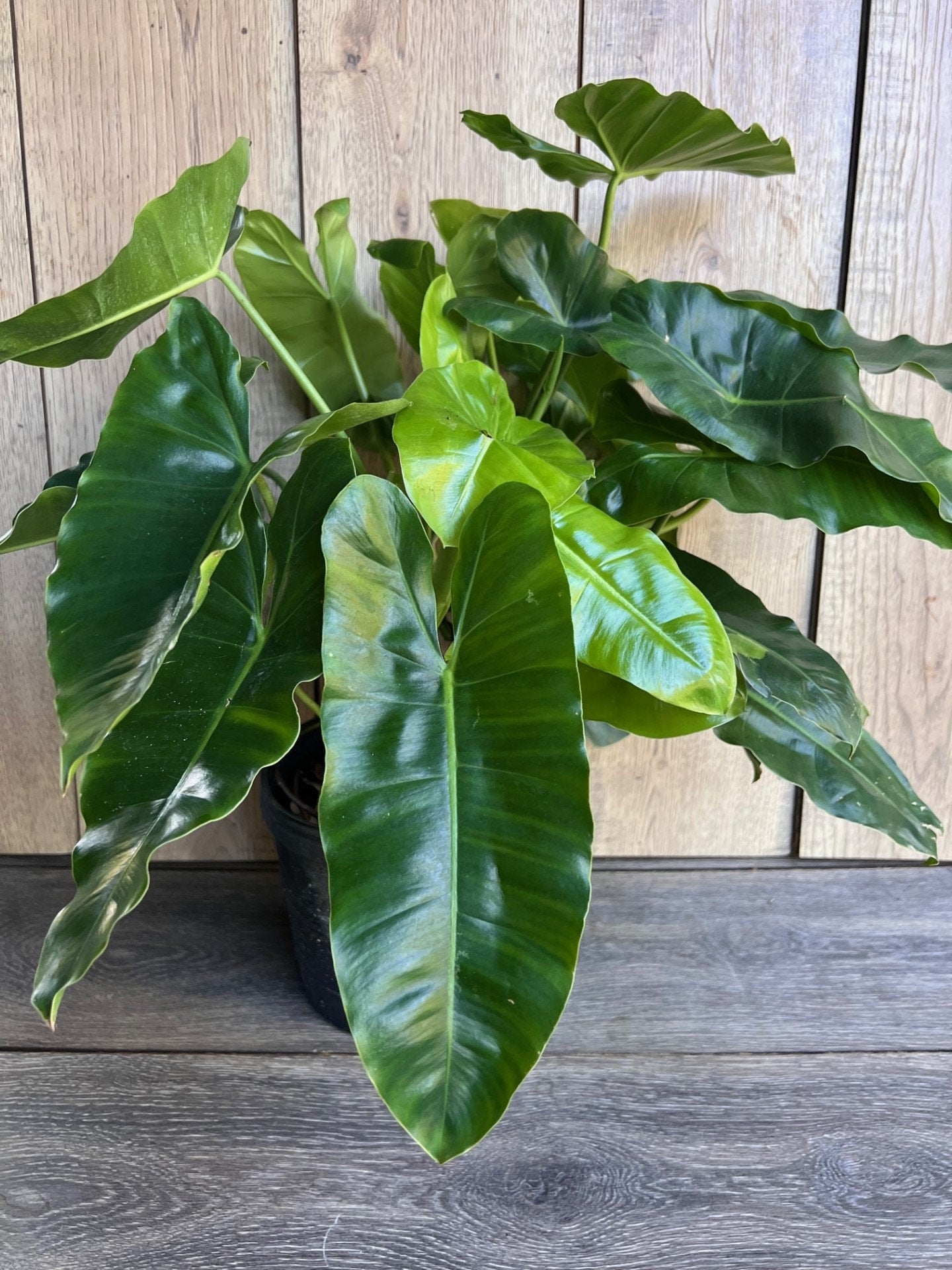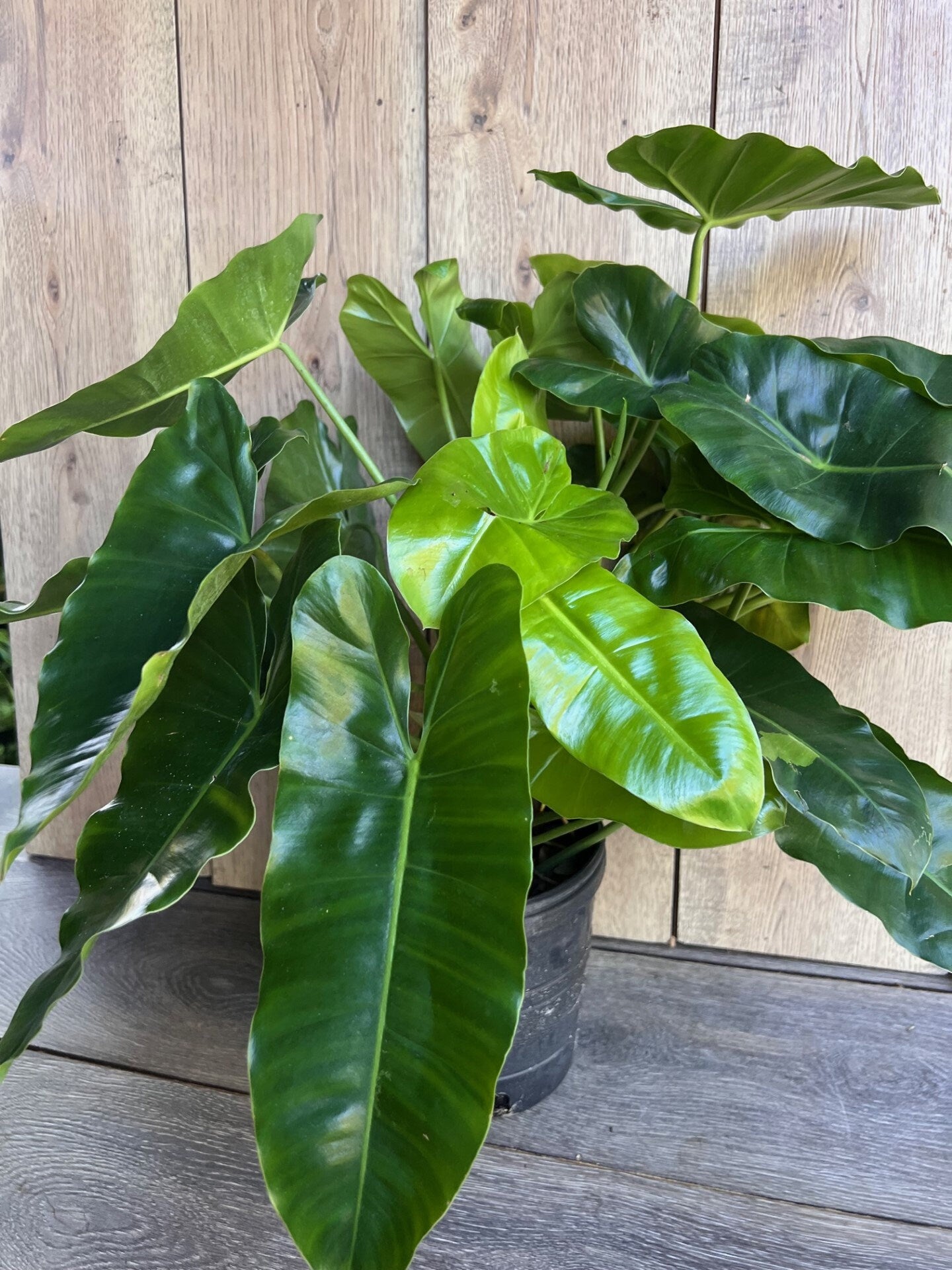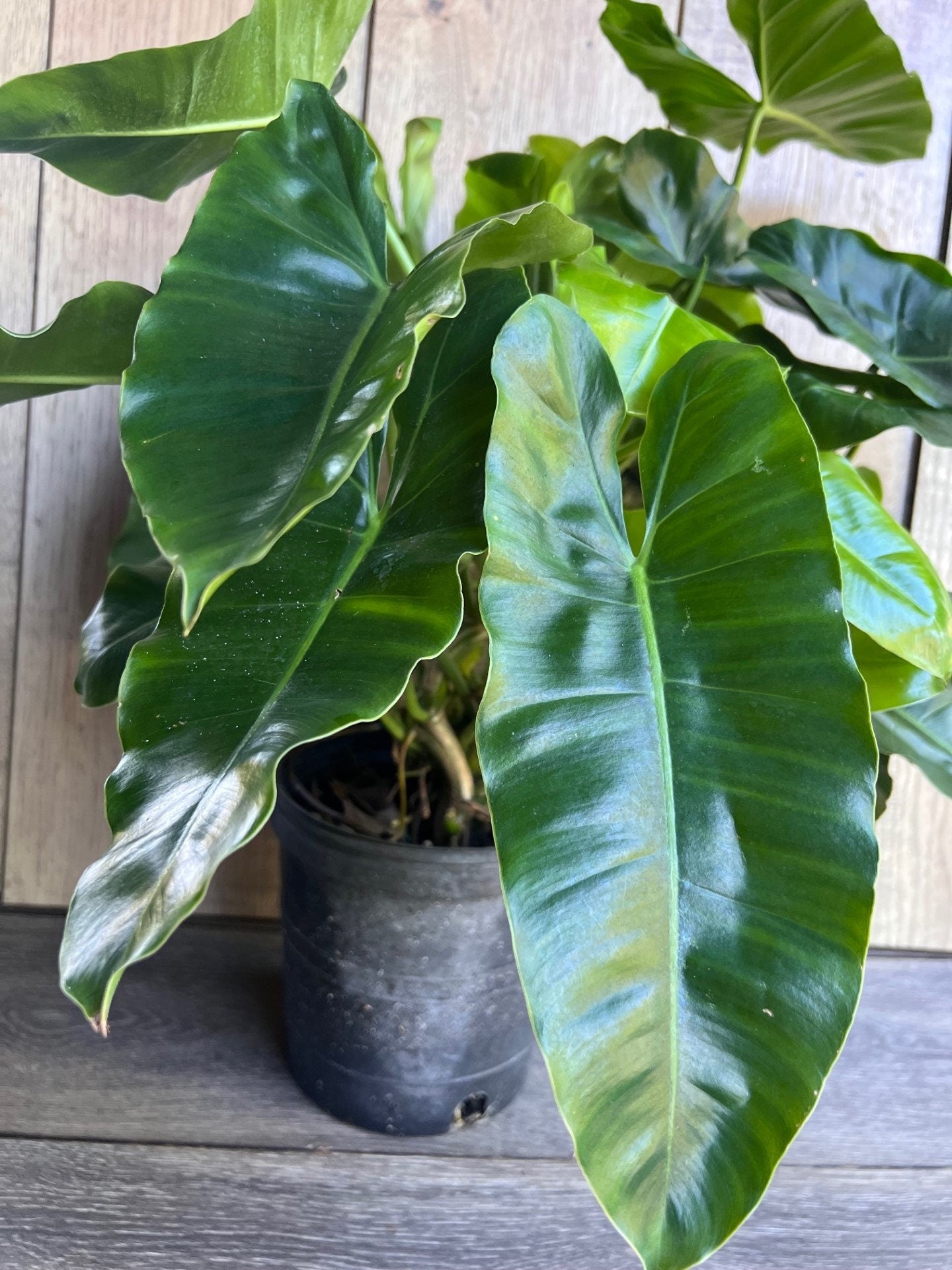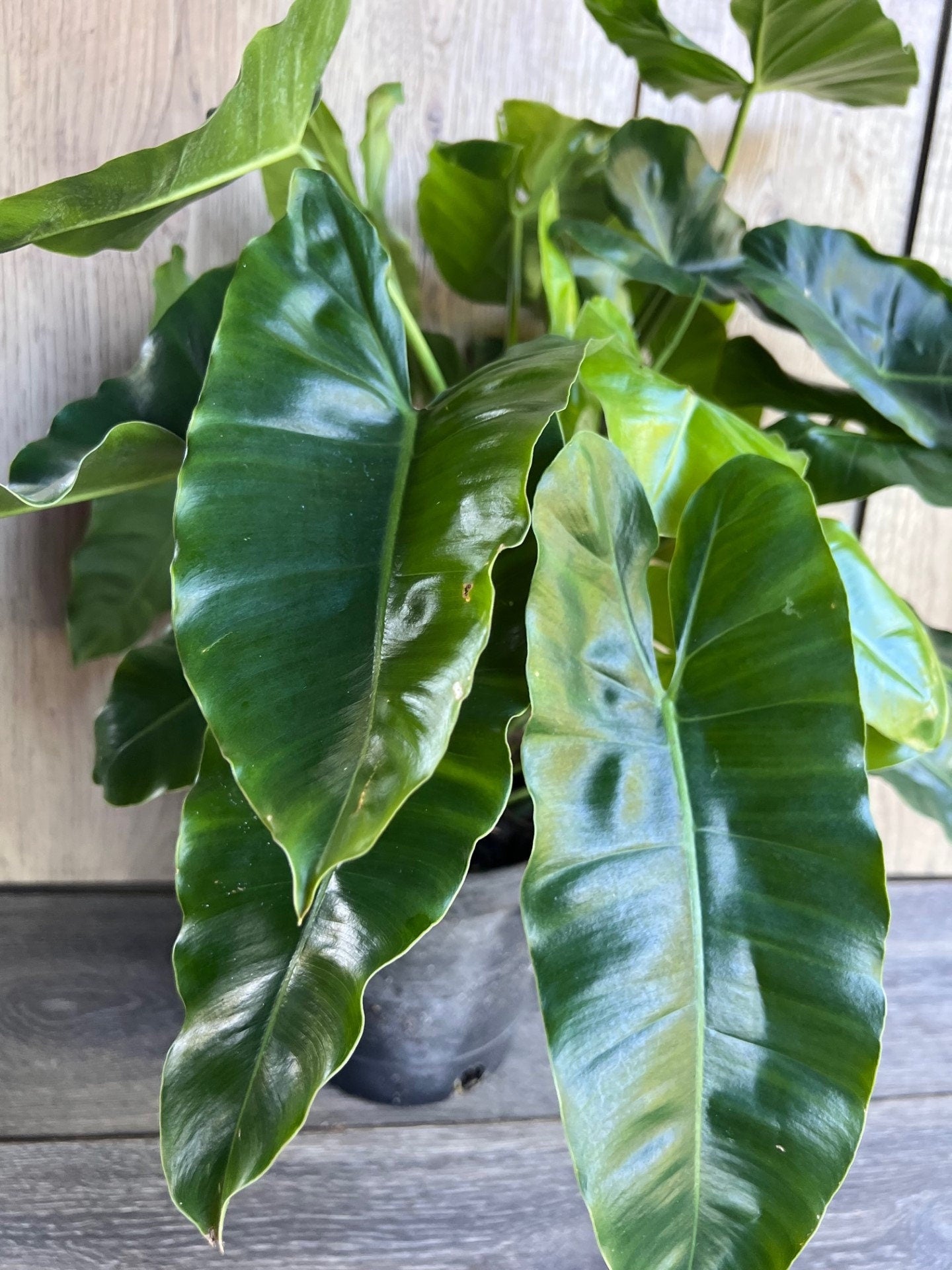1
/
of
5
Philodendron Burle Marx, in 6" Pot
Philodendron Burle Marx, in 6" Pot
Regular price
$24.33 USD
Regular price
$32.44 USD
Sale price
$24.33 USD
Unit price
/
per
Shipping calculated at checkout.
Couldn't load pickup availability
Note: You will receive Burle Marx in 6” Pot similar to the pictures
Philodendron Burle Marx is a unique and striking tropical plant native to Brazil, known for its glossy, leathery leaves that begin small and arrow-shaped before maturing into broader, rounded forms. Named after the Brazilian landscape architect Roberto Burle Marx, this compact and low-maintenance species is popular for indoor spaces. It can be grown as a bushy shrub or trained to climb with support, making it an attractive addition to any home.
Care Guide for Philodendron Burle Marx
-
Light
- Prefers bright, indirect light for vibrant growth. It can tolerate some low light but may lose its sheen and become leggy. Avoid direct sunlight, as it can scorch the leaves. Place near a window with filtered light or sheer curtains for optimal growth.
-
Watering
- Moderate watering is key. Water when the top 1-2 inches of soil feel dry, but don't let the plant dry out completely. Avoid overwatering, as it can lead to root rot. Ensure good drainage by using a pot with drainage holes and emptying the saucer after watering.
-
Soil
- Thrives in well-draining, loamy soil. Use a mix that retains some moisture but doesn’t stay soggy, such as a general potting mix with added perlite or orchid bark. The soil should be slightly acidic to neutral (pH 5.5–7.0).
-
Temperature
- Best in warm temperatures between 65°F and 85°F (18°C–29°C). Keep away from drafts, cold windows, or air conditioning vents. Avoid temperatures below 50°F (10°C), as it is sensitive to cold and frost.
-
Humidity
- Prefers moderate to high humidity. In dry indoor environments, increase humidity with a humidifier, misting, or placing the plant on a humidity tray. It can tolerate average humidity but will thrive with higher moisture levels.
-
Fertilizing
- Use a balanced, liquid fertilizer during the growing season (spring through summer), about every 4-6 weeks. Dilute to half strength to prevent nutrient burn. Reduce or stop fertilizing in winter when the plant’s growth slows.
-
Pruning
- Prune regularly to maintain shape and encourage bushier growth. Remove any leggy or damaged stems, and prune older growth for a neat appearance. Remove yellow or brown leaves to promote new growth.
-
Support (Optional)
- Can be trained to climb a moss pole or trellis for vertical growth. Use plant ties to support the vines if growing as a climber.
-
Repotting
- Repot every 1-2 years or when the roots become cramped. Choose a pot 1–2 inches larger than the current one and ensure it has good drainage. Refresh the soil during repotting.
-
Pests and Diseases
- Generally pest-resistant but can attract aphids, mealybugs, spider mites, or scale. Inspect regularly and treat infestations with insecticidal soap or neem oil. Avoid overwatering and ensure good drainage to prevent root rot and fungal issues.
-
Signs of Stress
- Yellowing leaves typically indicate overwatering or poor drainage. Adjust watering accordingly.
- Brown leaf tips can suggest underwatering or low humidity. Increase watering or humidity to resolve this.
- Leggy growth may result from insufficient light. Move the plant to a brighter spot to encourage fuller growth.
Share










